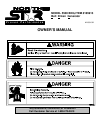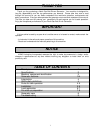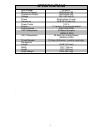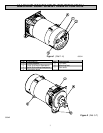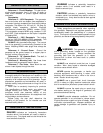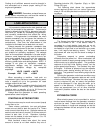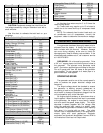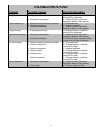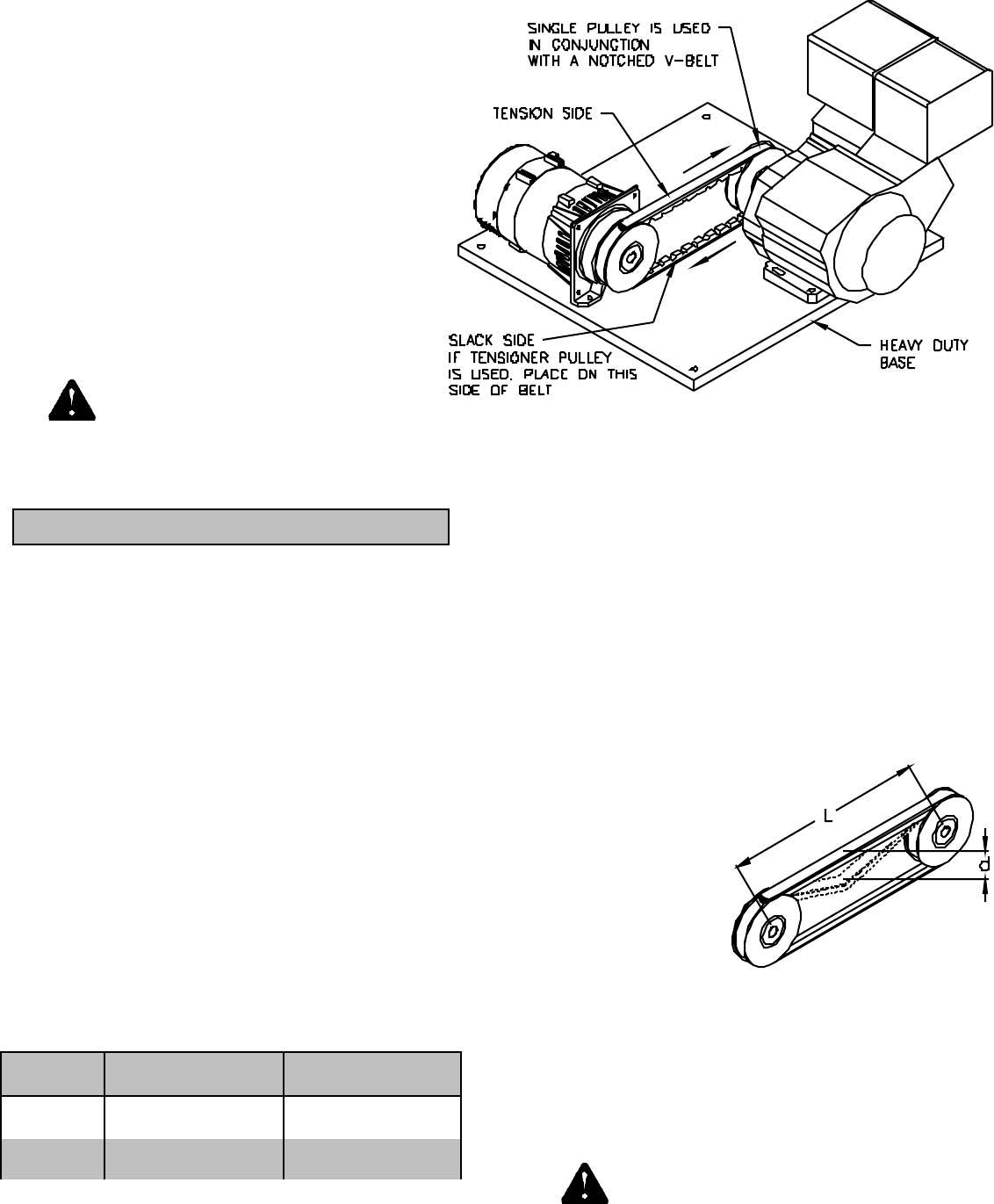
5
ALWAYS remove all oil or gasoline deposits
and accumulated dirt from generator and immediate
area. Keep generator head and engine clean.
NEVER operate the generator under the
following conditions:
A. Excessive change in engine speed, slow or
fast.
B. Overheating in load connecting devices.
C. Sparking or arcs from generator.
D. Loss of electrical output.
E. Damaged receptacles.
F. Engine mi sfire.
G. Excessive vibration.
H. Enclosed compartments, or confined
areas.
I. Flame or smoke.
J. Rain, snow or wet conditions.
K. Operator non-attendance.
WARNING Keep fire extinguisher
close by your generator and be familiar with how to
use it. Consult your local fire department for correct
extinguisher type.
INSTALLATION
OUTDOORS: Choose a location where the
generator will not be exposed to rain, snow or direct
sunlight. Position the generator on secure, level
ground so it will not tip or slide down a hill. Place the
generator so that the exhaust fumes will not be
directed towards people.
The installation site must be free from water,
moisture, or dust. All electrical components should be
protected from excessive moisture or the insulation
system will deteriorate and result in grounding or
shorting out the generating system.
Foreign matters, such as dust, dirt, sand, lint, or
abrasive materials can cause damage to the generator
head and engine if allowed into its cooling system.
POWER TRANSMISSION: The recommended
method to transfer the power from the engine to the
generator is by using sheaves (pulleys) and a V-belt.
The generator shaft is 7/8” diameter X 1.50” long with
a 3/16” keyway. Use the table below to select the
correct diameter sheave. Note that a notched V-belt
requires only one sheave while the standard V-belt
requires 2 side by side sheaves and 2 V-belts. All V-
belts have a B size cross section.
Figure 3 00038
Note: Guards are removed to show details.
The shaft speed of the generator must be between
3540-3720 RPM. At no load the correct speed is 3720
RPM. If the engine is a 3600 RPM engine, then a
sheave diameter ratio of 1:1 should be used. This
means that the diameter of the sheave on the engine
is the same as the diameter of the sheave on the
generator. If smaller than recommended sheaves are
used, the life of the belt will be shortened. The
possi bil ity of belt sl ippage also increases wi th a
smaller sheave.
The engine and generator should be mounted to a
plate or surface that can withstand the constant
vibration and stresses that will be produced. See figure
3 for a possible mounting configuration.
The user shall determine the proper belt
tensioning method for their specific use.
To determine belt tension:
Measure L - the center
to center distance of the
two sheaves
Measure d - the
deflection of the belt.
Tighten or loosen belt
until:
d = 0.016 X L
00039
If you desire to direct couple the generator to the
engine, great care must be taken to align the shaft of
the generator and engine to within the specified
tolerances of the chosen coupler.
NEVER install your generator inside confined
areas. Inside installation can cause health hazards or
death.
DANGER Always have proper guarding
on the V-belt and sheaves to prevent access to any
pinch points. Failure to guard the power transmission
mechanisms may result in serious injury or death.
Engi ne hp
Single Sheave Dia.
Belt Type - Qty.
Double Sheave Dia.
Belt Type - Qty.
9 hp
5.00”
Notched V-Belt - 1
4.60”
V-Belt - 2
11 hp
5.80”
Notched V-Belt - 1
5.00”
V-Belt - 2



